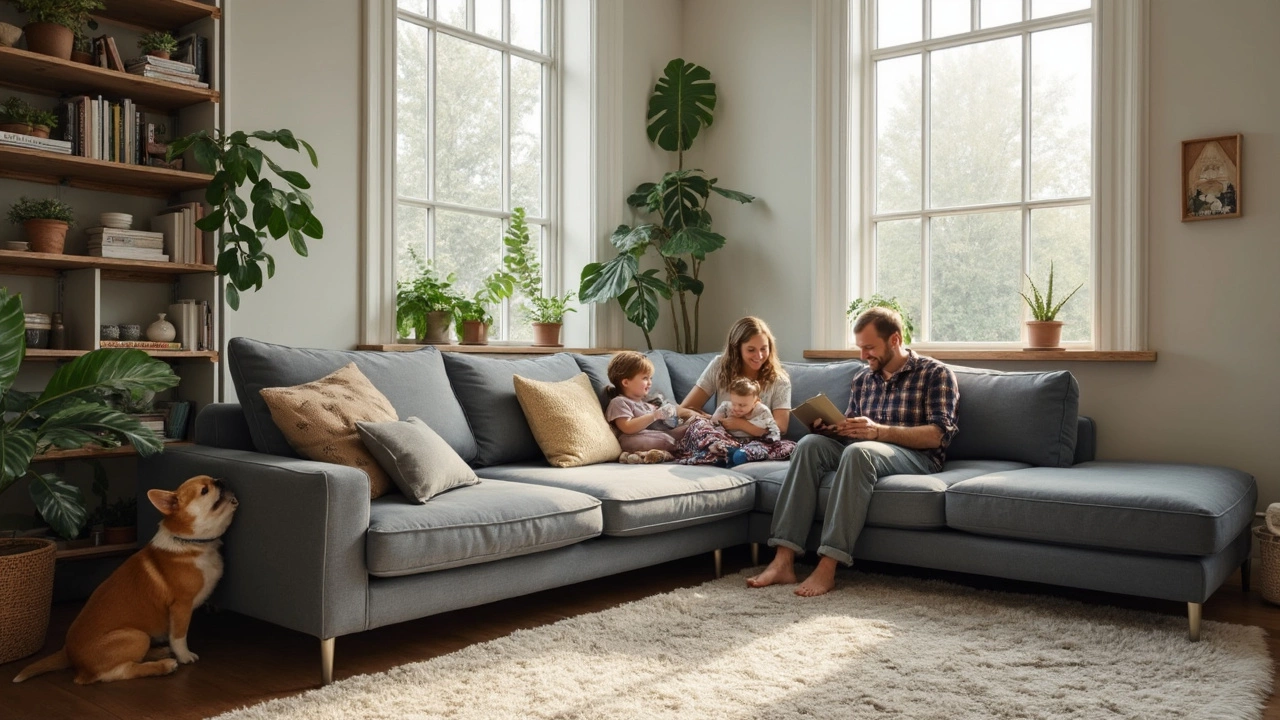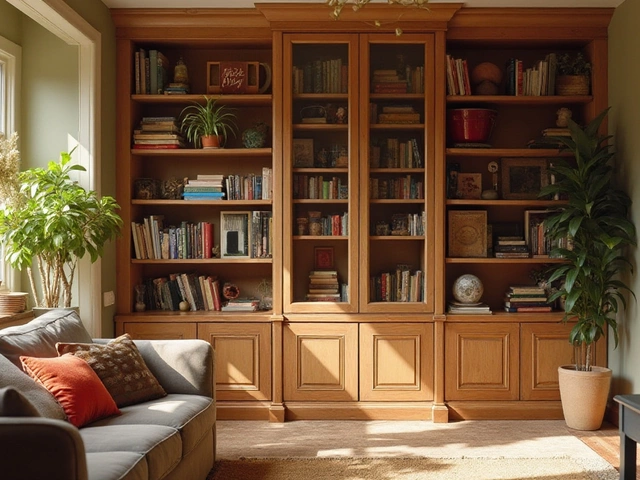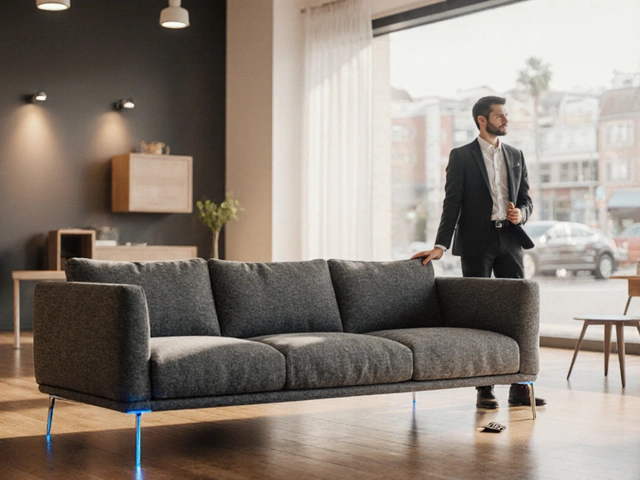 24
Apr,2025
24
Apr,2025
Think about all the times you’ve had to squeeze extra guests onto a not-so-roomy sofa. If your living room ever feels like a game of human Tetris, you’ve probably eyed a corner couch at least once. They’re that classic L-shape or sometimes U-shaped piece that promises to save space and handle a crowd. But are they actually worth it, or is it just good marketing?
Let’s get practical. Corner couches offer more seating for their footprint than most traditional sofas. Got a weird corner or an awkward-shaped living room? These guys snug right in, making use of space that’s usually wasted. Plus, if you love to stretch out while watching movies—corner couches are perfect for that. But here’s the thing: They’re not a magic fix for every home. They can dominate a small room or totally miss the mark if you move a lot or love rearranging furniture.
- The Deal with Corner Couches
- Where They Shine (and Where They Don't)
- What to Check Before You Buy
- Life Hacks for Small and Big Spaces
- Turning Your Couch Into the Room’s Star
- The Verdict: Worth It or Not?
The Deal with Corner Couches
Let’s talk basics. A corner couch, also called a sectional or L-shaped sofa, is designed to make the most out of a living room corner. Unlike the old-school sofa and loveseat combo, these setups use space that often just sits empty. That means more seating for your friends and family, all packed into a footprint that feels smarter than lining up two sofas together.
One huge perk with corner couches is how flexible they are. Some sectionals are modular, letting you change up the layout when you want — left side, right side, even separated into smaller pieces if you move or just feel like trying something new. It’s no wonder furniture stores keep pushing these as a one-size-fits-all solution for modern living rooms.
- Space saving: Tucks right into the corner, taking up less floor area than two regular sofas.
- Better for groups: Seats more people without needing extra chairs.
- Great for lounging: The shape lets you stretch out or lie down without hogging the middle seat.
- Works for open-plan living: Can divide a big space into zones — say, a chill area and a dining nook.
In the UK and US, corner couch sales jumped over 15% from 2022 to 2024, according to a report by Furniture Today. Unsurprisingly, folks love the mix of practicality and comfort. It’s a piece that’s doing double duty: comfy spot for the family, but also a sneaky way to make a small apartment feel bigger.
The catch? Some homes just aren’t made for them. If your doors, windows, or radiators are in awkward spots, a corner sofa can turn into a squeeze. And good luck moving a giant sectional up a tight staircase — measure everything before buying. Literally everything.
Where They Shine (and Where They Don't)
Let’s be real, corner couches bring their A-game when you want a lot of seating without putting in extra chairs. If your living room often hosts friends, family, or kids’ playdates, these sofas swallow up a crowd without anyone battling for elbow space. In open-plan apartments or homes with awkward corners (think strange wall angles, tricky windows), a corner sofa fills those dead zones, making even small spaces feel put together. They also work great for zoning—basically, splitting a larger room into different areas without putting up walls or screens.
Where do they really shine? Game nights, movie marathons, or just stretching out at the end of a workday. The comfort factor is solid. If you’re watching TV, anyone can snag a spot with a good view—and someone always gets the golden corner to sprawl out in style.
But, yeah, sectional sofas have a few weak points. If you like to switch things up and rearrange your place every few months, moving a big, heavy sectional can turn into a workout. Some spaces can actually feel smaller if you bring in a hulking corner couch—the room takes a backseat, and the sofa steals the show (sometimes not in a good way). Plus, if you’re renting or planning to move, remember: big furniture can be a nightmare to get through doorways or up tight stairs.
Another watch-out? In smaller living rooms, these couches can choke the flow of the space. Not all living room furniture plays nicely with a giant L-shape. Flatmates or families with very different seating preferences might find that one person ends up hogging the best spot every night.
| Where Corner Couches Shine | Where They Don't |
|---|---|
| Lots of seating for gatherings | Rooms under 12 x 12 feet |
| Making the most of odd corners | If you move houses often |
| Great for zoning open layouts | Frequent furniture rearrangers |
| Perfect for lounging out fully | If doors or stairs are super tight |
So, before you lock in a massive sectional, measure your space and ask yourself how you’ll really use it. It’s not just about style; it’s about how your life fits around the couch (or doesn’t).
What to Check Before You Buy
Before you get swept away by stylish showroom photos, take a step back and look at what really matters. Choosing the right corner couches can save you a lot of headaches—and a lot of money. Here’s what you need to check before pulling out your card:
- Room size and shape: Grab a tape measure and map out your living room. A corner couch is awesome for tight corners, but in a super small apartment, it can overwhelm the space. Make sure you leave at least two feet of walking space around the sofa. Try marking out the couch’s footprint with painter’s tape to see how much room it’ll take up for real.
- Doorways and hallways: Sounds obvious, but so many people forget to check if the sectional sofa can even fit through their doors or up the stairs. If the couch comes in one huge piece, you could be stuck. Modular designs, where sections separate, are way easier to move.
- Orientation: Do you want a left-hand or right-hand layout? This just means which way the longer part of the couch points when you’re facing it. Make sure it lines up with your living room’s shape and the flow of foot traffic.
- Fabric and durability: If you’ve got kids, pets, or both, look for a tough, stain-resistant fabric. Microfiber and performance fabrics hold up better in daily life. Leather looks great but can scratch easily if your dog thinks it’s his nap zone.
- Maintenance: Some corner couches come with removable, washable covers. That’s a lifesaver if you have little ones or eat on the couch a lot. Check reviews for complaints about sagging cushions or tricky fabric care.
- Seating capacity: Think about how many people you want to seat, not just for big parties but daily use. If your family is four, but you have people over every weekend, go bigger—otherwise, you’ll always run out of spots.
For a little extra reassurance, check the average living room furniture dimensions and seating capacity in the table below. You’ll get a better sense of what works for most homes.
| Sofa Type | Typical Size (in inches) | Ideal Room Size (sq. ft.) | Seating Capacity |
|---|---|---|---|
| Corner Couch (L-Shape) | 95 x 95 | 180+ | 5-6 |
| Standard Sofa | 84 x 38 | 120+ | 3 |
| U-Shaped Sectional | 120 x 95 | 250+ | 7-8 |
So, before falling for that sleek ad, check off every one of these points. Buy smart, and your corner couch won’t just look cool—it’ll actually fit your life.

Life Hacks for Small and Big Spaces
If you’re thinking about squeezing a corner couch into your space, you’ve got to play things smart. In smaller rooms, that huge comfy sofa can start to feel like a wall if you’re not careful. For anyone living in an apartment or dealing with a tight living room, choose a model with shorter arms or a chaise on one end. Low-profile backs keep things open, too. Modular sectional sofas let you rework the shape, so you can adapt as you go. Some brands actually specialize in these setups, letting you buy extra pieces when you have more space.
Before buying, grab some masking tape and lay out the exact footprint of the corner couch on your floor. This quick move saves a ton of regret later. Leave at least 30 inches of walkway space around the sofa’s edges—otherwise things get cramped in a hurry. Here’s a smart tip: Sofas with legs look lighter, which tricks the eye and makes any room feel bigger.
For big, open family rooms, you can get a bigger sectional sofa and use it as a room divider. Place the longer edge away from the wall to create a casual split between your hangout zone and dining area. With larger spaces, storage becomes a handy extra. Plenty of corner couches now come with built-in storage under the seats—great for hiding blankets, board games, or all the random clutter that ends up in the living room.
- Avoid overstuffed designs in small rooms—they hog more space than you’d think.
- If space is tight, pick neutral colors. Dark, bulky couches shrink a room fast.
- Measure your doorways and stairwells before you buy, especially if you’re in an apartment building.
Need some numbers? According to a 2022 home design survey, 56% of buyers who chose modular corner couches reported reorganizing their layouts at least twice a year—proof they really are flexible.
| Room Size | Ideal Corner Couch Length | Extra Features to Look For |
|---|---|---|
| Under 150 sq. ft. | Under 80 inches | Lift-top storage, low back, light fabric |
| 150–300 sq. ft. | 80–110 inches | Removable covers, chaise, ottoman |
| 300+ sq. ft. | 110+ inches | Recliners, built-in power ports |
Bottom line: There’s almost always a way to fit a corner couch into your life—you just need to match the right style and size to your actual space.
Turning Your Couch Into the Room’s Star
You don’t need a fancy design degree to make a corner couch the highlight of your space. The trick is to be intentional—treat it as the anchor point and build the rest of the room around it. Here’s how you can pull that off without spending a fortune or getting overwhelmed:
- Pick the right color. Neutral shades, like gray or cream, work with almost anything and keep things looking clean. If you want your corner sofa to pop, go for navy, green, or even burnt orange. Don’t be scared of a bold color if you can keep the rest of the room balanced.
- Play with textures. Mix things up with throws, cushions, or even a textured rug. This not only makes the sectional sofa comfier but gives it that lived-in, inviting vibe.
- Arrange smartly. Most people shove corner couches against the wall, but in some setups, floating it in the room (with its back open to another space) helps define areas in open-plan spaces. It creates a chill hangout zone instead of a furniture afterthought.
- Use all that space. The right coffee table, some nested side tables, or a shelf behind the couch can turn wasted corner real estate into something genuinely practical.
Real talk: People with living room furniture that fits their lifestyle are happier with their homes. A 2024 survey found that 7 out of 10 buyers who chose a corner couch said it became the most-used seating spot in their house. So yeah, you’re not just spending money—you’re investing in better movie nights, heart-to-hearts, or even mid-afternoon naps.
| Corner Couch Must-Haves | Why It Matters |
|---|---|
| Plush cushions | Super comfy, stays in shape longer |
| Detachable covers | Easy cleaning, looks fresher for years |
| Modular sections | More options for rearranging or moving |
| Stain-resistant fabric | Less stress over spills |
Putting just a little thought into styling your corner couch can seriously boost how your place feels and works. Don’t be shy about making it the heart of the room—it’s built for the spotlight.
The Verdict: Worth It or Not?
So, after all the hype and Instagram photos, are corner couches actually worth your money? It depends a lot on your space, your routine, and how you like to hang out at home. If you’ve got a big living room or a family that loves to pile together for games or movies, these sectional sofas definitely pull their weight. They’re famous for maximizing seating without feeling cramped, and lots of folks find them more comfy than two separate sofas jammed into a corner.
But there are trade-offs. In a tight apartment, a corner sofa can swallow up precious open space and make the place feel cramped. Moving? These things aren’t exactly easy to fit through narrow doors or up the stairs. Renting or love to shake up your room layout every few months? Rearranging can be a pain since that L-shape is pretty much non-negotiable for most models.
Here's a quick breakdown to help you weigh the pros and cons:
- Space Saving: Scores big in open-plan rooms or awkward corners.
- Seating: Great when you need a sofa for a crowd or a big family.
- Comfort: Sprawl out, nap, or put your feet up—plenty of space to get cozy.
- Flexibility: Not ideal for small, tricky spaces or for folks who move a lot.
Some figures worth knowing: According to a 2024 survey from a well-known furniture retailer, about 68% of customers with a corner couch said they’d buy one again. Most loved the comfort and the way it pulled the room together, but about a quarter complained about difficulties moving it or making it fit in smaller apartments.
| Factor | Corner Couch | Traditional Sofa |
|---|---|---|
| Average Seats | 5-7 | 2-4 |
| Moves Easily | No | Yes |
| Best Fit For | Large/family rooms | All room types |
| Custom Layouts | Limited | Flexible |
Bottom line: if you’ve got the space and know you need lots of seating, a corner couch is hard to beat. But if you’re in a small apartment or think you’ll be moving soon, weigh those downsides before you jump in. For plenty of folks, the comfort and convenience are absolutely worth it.




